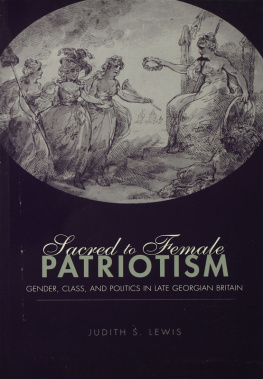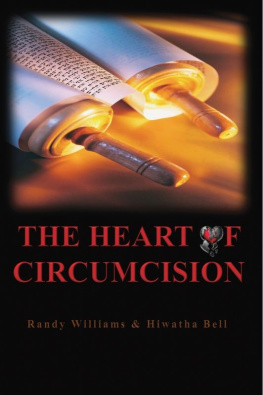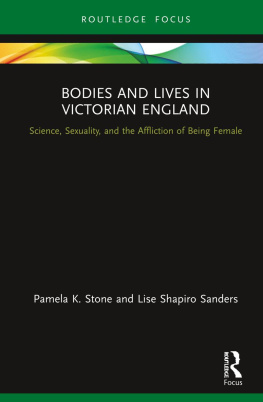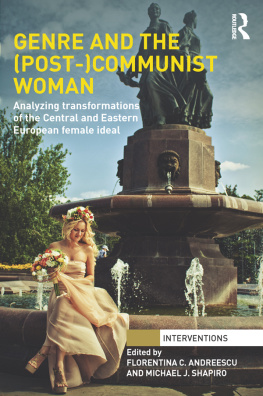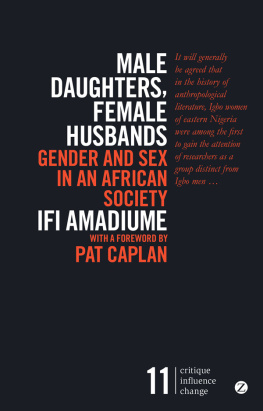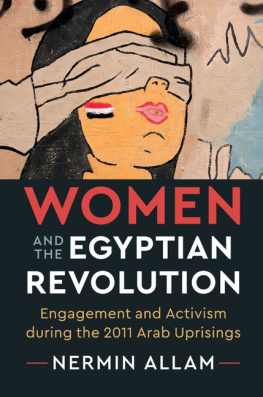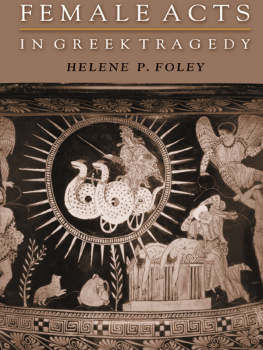
Maria Frederika Malmstrm is Visiting Associate Professor of Anthropology in the Department of Anthropology/Institute for Research on Women, Gender and Sexuality at Columbia University, New York City. She is also currently a visiting scholar at New York University, in the Department of Anthropology. In addition, she is a senior researcher for North Africa in the Conflict, Security and Democratic Transformation Cluster at the Nordic Institute in Uppsala, Sweden. From 2012 to 2015 she worked in Performance Studies at the Tisch School of the Arts. Malmstrm has also taught as a senior lecturer in the School of Global Studies at the University of Gothenburg, Sweden, and in the Department of Cultural Studies, University West, Sweden. Additionally, she is a gender consultant for UNFPA and UNICEF and a member of several academic and policy networks. Her fieldwork experiences in Cairo, ongoing for more than a decade, have allowed her to experience both continuity and change during these years.
The Politics of Female Circumcision in Egypt is a deep and sensitive exploration of how the politicization of female circumcision is informing discourses and experiences of marriage, sexuality, and femininity among lower-income families in contemporary Cairo. Malmstrm's rich case studies illuminate Egyptian women's agency against the backdrop of everyday cultural patterns, religious and secular tensions, and generational debates over proper forms of intimacy and gendered comportment. At once highly accessible, multi-layered, and revealing, this book is a major contribution to our understandings of gender dynamics in the Middle East.
Janice Boddy, FRSC, Department of Anthropology,
University of Toronto
An unsurpassed account of the (contested) meaning and experience of femininity in the land of the Arab Spring, where most Egyptian women continue to embrace the gender-sculpting practice of female circumcision, both for themselves and for their children. The surgery is painful and typically occurs with little preparation in middle childhood. Yet in and around Cairo most adult women do not view themselves as mutilated (quite the contrary), nor has their sex life been ruined (quite the contrary). Global and local campaigns to criminalize the practice in Egypt's faction-ridden political climate have caused some younger women to wonder whether they have been disfigured and sexually destroyed. In the eyes of many other Egyptian women female circumcision enhances the female body (and mind) and is viewed as an act of civil disobedience in defense of female honour and family privacy. Congratulations to Maria Malmstrm for her social maturity, professionalism and intellectual balance: what an accomplishment for this liberal secular Swedish anthropologist to fairly represent the voices of low-income Arab Muslim women, who enjoy sex (and even watch pornographic films) yet still believe in family honour, virgin brides, the intimate connections between marriage, sex and reproduction, and for whom female circumcision, the experience of deflowering after marriage, and childbirth are highly valued as the three great character-building and ennobling ordeals of life.
Richard A. Shweder, Harold Higgins Swift Distinguished
Service Professor, Department of Comparative
Human Development, University of Chicago
Malmstrm's compelling portrayal of the generational changes revolves around intimate ethnographic data of unprecedented detail and subtlety. All future ethnographic work on female circumcision will be compared to Maria Malmstrm's compelling analysis. She has set a new standard of intimate and insightful ethnography of cultural change in our globalizing world.
Ellen Gruenbaum, Professor and Head,
Department of Anthropology, Purdue University
THE POLITICS OF
FEMALE
CIRCUMCISION
IN EGYPT
Gender, Sexuality and the Construction of Identity
M ARIA F REDERIKA M ALMSTRM
Whatever you touch, touches you too (Hsu 2000: 252)
Published in 2016 by
I.B.Tauris & Co. Ltd
London New York
www.ibtauris.com
Copyright 2016 Maria Frederika Malmstrm
The right of Maria Frederika Malmstrm to be identified as the author of this work has been asserted by the author in accordance with the Copyright, Designs and Patents Act 1988.
All rights reserved. Except for brief quotations in a review, this book, or any part thereof, may not be reproduced, stored in or introduced into a retrieval system, or transmitted, in any form or by any means, electronic, mechanical, photocopying, recording or otherwise, without the prior written permission of the publisher.
Every attempt has been made to gain permission for the use of the images in this book. Any omissions will be rectified in future editions.
References to websites were correct at the time of writing.
Library of Modern Middle East Studies 170
ISBN: 978 1 78453 157 7
eISBN: 978 0 85773 944 5
ePDF: 978 0 85772 600 1
A full CIP record for this book is available from the British Library
A full CIP record is available from the Library of Congress
Library of Congress Catalog Card Number: available
To Embla, my beloved daughter
LIST OF PLATES
Busy streets of Cairo
The corniche of Zamalek, with downtown Cairo in view
Graffiti on a wall in downtown Cairo, 2002
Imprints of hands (very common outside the entrances of homes) dipped in the blood of a sheep that is sacrificed at eid el-adha (festival of sacrifice) to protect the household
Village house in rural Egypt
The TV is always on, even during the bustle of cutting up the sheep for distribution during eid el-adha
Fashion poster advertising veils
Chopping meat for dinner
Carrying bread for sale
Lila
Photographs by Maria Malmstrm (4, 6, 8, 10) and Carl Magnus Henriksson (1, 2, 3, 5, 7, 9).
ACKNOWLEDGEMENTS
Um Mahmood, it feels like yesterday that you stepped towards your window and asked God to give me my doktorh. Thank you, Um Mahmood for believing in me and for making my work possible. I offer the same gratitude to all the other women, men and children who helped me with my work in Egypt. Without you, there would have been no book and I am honoured to have been able to learn about your competence and life experience and to have been received with such warmth and generosity. I am also deeply grateful and owe huge thanks to many people who have helped me during the lengthy process that has resulted in this book. They are too many to mention, but you know who you are family, friends, colleagues, assistants and editors. My deepest thanks to you all.
I want to thank my beloved daughter, Embla, who has been with me since the very beginning of this anthropological journey, initially in my belly during the first term of anthropology at the University of Gothenburg, then in Cairo together with me for a year of fieldwork and later on in Gothenburg with me for the final part of writing up the thesis. I have written both my dissertation and this book with the invaluable help of her love, sharp intellect, humour and critical comments about her mother's peculiar occupation. I dedicate this book to you Embla. I love you, a million times over


